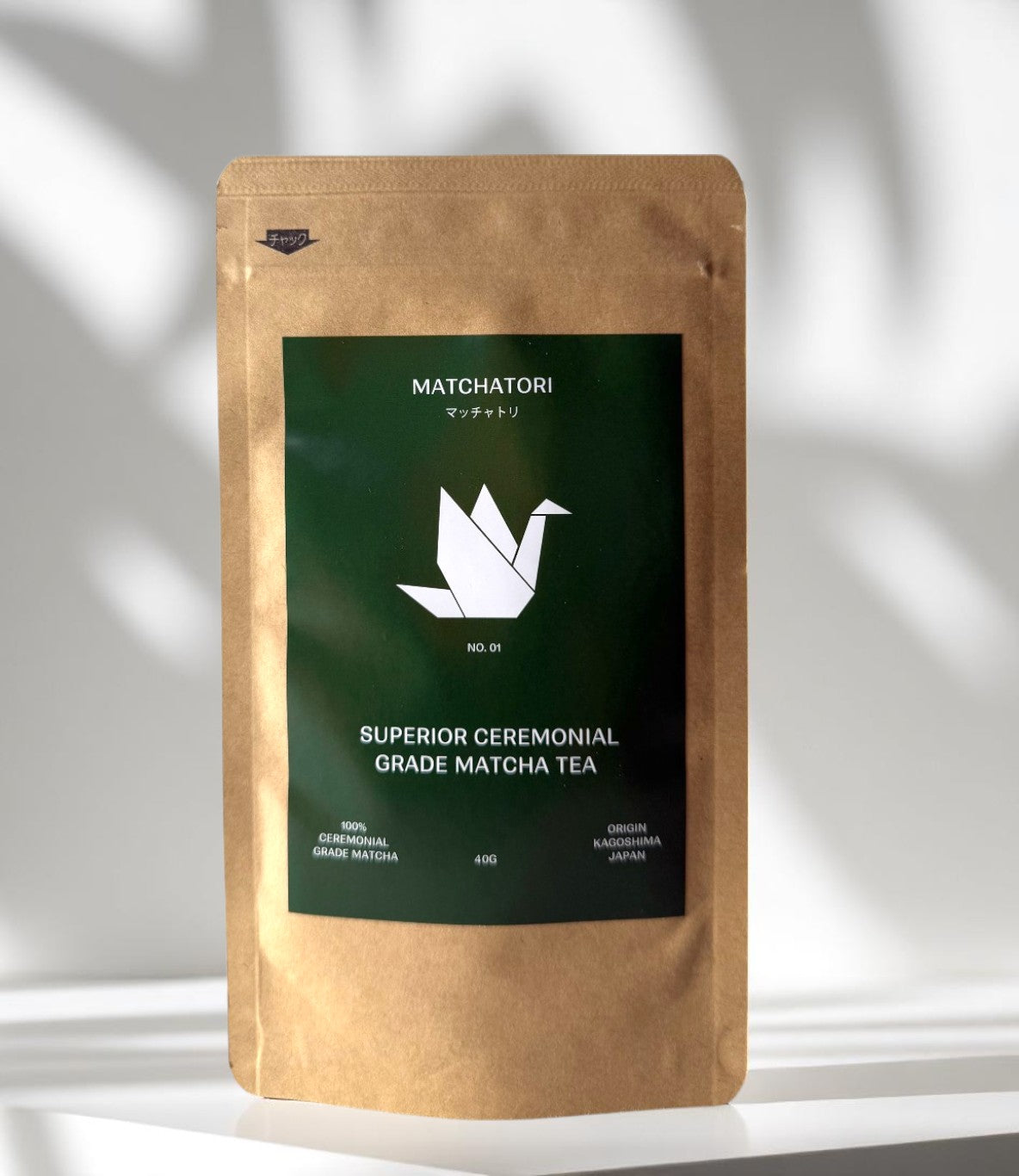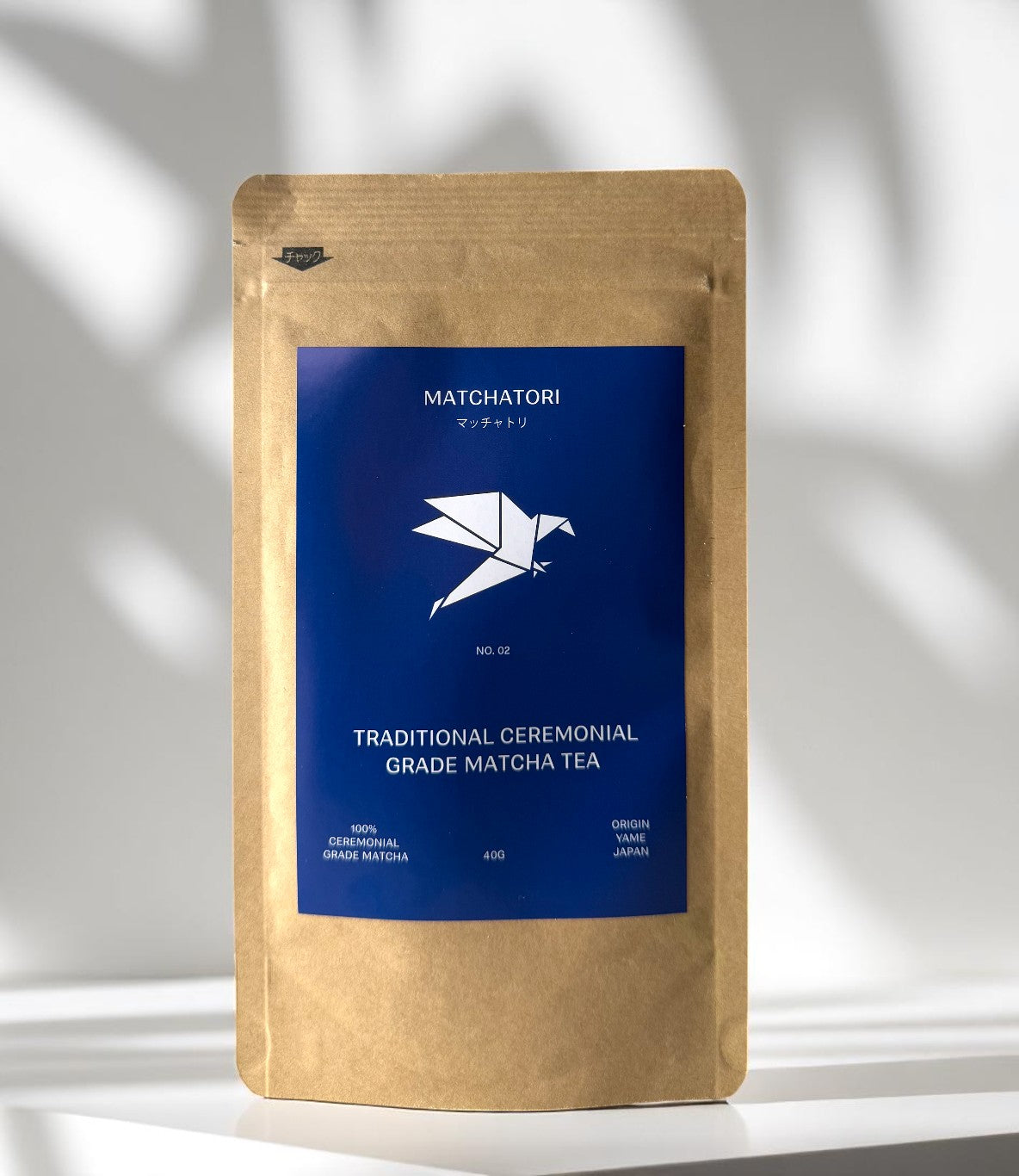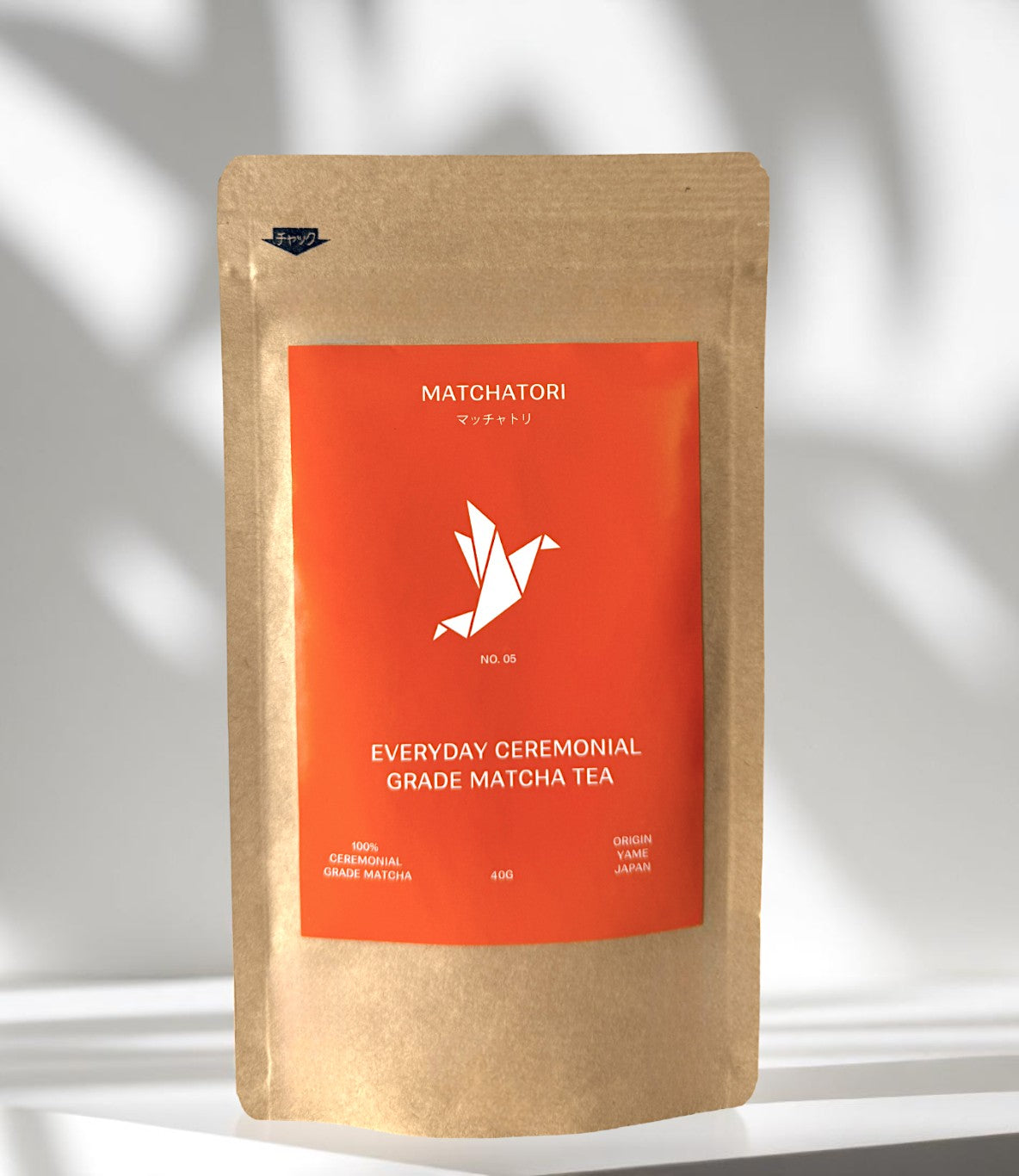Ever wondered what is matcha and why it’s taking over cafés and kitchen counters across the UK? From TikTok trends to wellness blogs, everyone’s obsessed — but few know how matcha is made or why its taste feels so soothing. Studies show shade-grown matcha can contain up to 60% more amino acids, giving it that creamy matcha flavour and calm energy.
Unlike regular tea, matcha tea is crafted through centuries of tradition, balancing science, art, and mindfulness in every whisk.
So, if you’ve ever wondered what does matcha taste like or where its vivid color comes from — this one’s for you.
Key Takeaways
- Shade-grown matcha boosts chlorophyll and L-theanine, giving its signature green color and umami sweetness.
- Studies show shading reduces catechins and bitterness while increasing amino acids, enhancing balance and flavor.
- The matcha milling process creates fine, even particles for smooth foam and creamy texture.
- UK cafés saw matcha drink sales double in summer 2025, reflecting a £7M surge — a clear sign of growing obsession.
- Finer grind = stable crema and enhanced sweetness.
- Premium Japanese matcha costs more due to skilled shading, hand-picking, and slow stone-milling craftsmanship.
What Is Matcha and Where Does Matcha Come From?
Define Matcha — What Is Matcha Tea, Really?
So, what is matcha? It’s not just powdered green tea — it’s the art of consuming the entire matcha plant. Matcha tea is made from shade-grown leaves of the Camellia sinensis plant, steamed, dried, and stone-milled into a fine powder. Unlike regular green tea, you’re not just drinking an infusion — you’re drinking the whole leaf.
This means you get more nutrients, antioxidants, and that signature matcha flavour — a creamy, umami-rich taste balanced by a touch of natural sweetness. Simply put, matcha is made of sunlight-starved leaves turned into pure energy.
Where Does Matcha Green Tea Come From?
Wondering where does matcha come from? True matcha originates in Japan, mainly from Uji, Nishio, and Kagoshima. These regions have fertile volcanic soil and misty microclimates that enhance the flavor of matcha. Uji matcha offers a deep jade color and buttery smoothness, while Kagoshima’s matcha delivers a vibrant, grassy edge.
The matcha green tea plant thrives in carefully curated shade environments. Farmers stretch black mesh over the fields 20–30 days before harvest — an ancient technique called tana cultivation.
Matcha vs Green Tea — What Is the Difference?
Here’s the real difference: matcha is whisked, not steeped. While green tea extracts flavor from leaves, matcha tea powder dissolves in water — giving you the full nutrient profile. This means higher L-theanine, more antioxidants, and a unique matcha taste like tea, but creamier and fuller.
As the Japanese say, “Matcha is not just drunk — it’s experienced.”
Key Factors That Shape Matcha’s Origin
- Sunlight Exposure: Less sunlight means richer chlorophyll and that striking electric green color.
- Harvest Timing: Early spring leaves are tender, soft, and packed with natural sweetness.
- Soil Quality: Mineral-rich volcanic soils give matcha its complexity and earthy undertones.
- Terroir Influence: Humid microclimates in Uji and Nishio regions promote higher amino acid content and smoothness.
The Farm Stage — How Shade-Growing Transforms the Matcha Plant
How Matcha Tea Is Made: The Role of Shade-Growing
Before harvest, farmers shade the matcha green tea plant to block up to 90% of sunlight. This slows photosynthesis, letting L-theanine and chlorophyll accumulate — creating a vibrant color and mellow flavor. A ScienceDirect study confirmed that shaded leaves produce deeper green pigments and stronger umami.
Our Superior Ceremonial Grade Matcha 40g embodies this purity. It’s made from first-harvest leaves, handpicked under 25 days of shade, ensuring high amino acid levels and the signature matcha is made of sweetness and calm focus.

In Image: No 1. Superior Ceremonial Grade Matcha 40 g
Why Shade-Grown Matcha Tastes Sweeter and Greener
What does matcha taste like? That creamy, oceanic note comes from L-theanine, which builds during shading. The reduced catechins mellow bitterness, producing that soft, balanced umami known as oishii. As the BBC Good Food guide explains, shade-grown matcha has 137× more antioxidants than regular green tea — proof that patience pays off.
Our Signature Ceremonial Grade Matcha 40g captures this depth, reflecting 25 days of ideal shading — the perfect point where matcha flavour peaks in sweetness and vibrancy.
What Factors Affect Matcha Color and Umami?
- Sunlight: Prolonged shading enhances chlorophyll, giving a vivid emerald tone.
- Harvest Time: Early plucking means fresher taste and smoother umami.
- Steaming: Japanese steaming methods preserve amino acids and prevent oxidation.
Each tin of our Traditional Ceremonial Grade Matcha 40g is steamed within 2 hours of harvest, locking in that unmistakable matcha color and flavor.

In Image: No 2. Traditional Ceremonial Grade Matcha 40 g
From Leaf to Powder — How Matcha Is Made and Milled
Steaming, Drying, and De-Stemming the Tencha Leaves
Once harvested, leaves are steamed briefly to stop oxidation, dried, and stripped of veins and stems — becoming tencha. These young leaves define what matcha is made of — the purest part of the plant, packed with L-theanine and chlorophyll.
Every step matters. As the Japan Times explains, Japanese growers handle tencha with reverence, ensuring it remains nutrient-dense before grinding.
Stone-Milling — The Secret Behind True Matcha Flavor
Traditional granite mills rotate at just 30 rpm, preventing heat from altering the taste of matcha. This slow process produces ultra-fine particles that dissolve perfectly in water, delivering that smooth, creamy finish.
Our Everyday Ceremonial Grade Matcha 40g and Traditional Ceremonial Grade 40g are both stone-milled at <30g/hr — a tribute to traditional matcha production.
Matchatori.com works with heritage farms in Uji, ensuring every ceremonial tin captures the full essence of Japan’s artistry. Explore our collection of premium Japanese matcha powders, milled for the perfect whisk and froth.
How Milling Affects Matcha Color and Texture
Research published on ResearchGate found that fine, consistent particles enhance foam stability and texture. That’s why baristas rely on Latte Grade Matcha 40g — its microfine grind produces a luscious, stable crema and silky mouthfeel.
The Umami Experience — What Does Matcha Taste Like?
Matcha Flavor Map: Sweet, Bitter, and Umami Balance
So, what does matcha green tea taste like? It’s sweet, grassy, creamy, and slightly savory — a flavor with depth and calm. The flavor of matcha varies by grade; ceremonial types lean creamy and soft, while latte-grade leans nutty and bold.
How Milling and Shade Time Influence Matcha Flavour
Longer shading means higher L-theanine, producing smooth sweetness. Shorter shading keeps a brighter, greener flavor. Finer milling deepens matcha flavor, creating the creamy, frothy texture every matcha lover seeks.
Our Everyday Ceremonial Grade Matcha 40g bridges the gap — ideal for whisking daily without compromising umami.

In Image: No 5. Everyday Ceremonial Grade Matcha 40g
Matcha Taste Like Tea — Yet Beyond Tea
Matcha taste like tea, yet it’s far more layered — vegetal, buttery, even oceanic. The taste of matcha reflects centuries of craftsmanship, each sip offering a calm alertness unmatched by coffee.
Pairing Matcha with Roasted Notes — The Role of Hojicha
Balance the creaminess of matcha with roasted depth. Our Deeply Roasted Hojicha Tea adds a nutty, earthy contrast — the yin to matcha’s vibrant yang. Together, they make a comforting, balanced ritual.
FAQs About Matcha Green Tea and Flavor
Q: How is matcha farmed?
A: Shade-grown matcha is cultivated under cloth for 20–30 days before hand-picking. This method enhances chlorophyll, L-theanine, and umami while softening bitterness.
Q: What exactly is matcha?
A: Matcha is finely ground green tea powder made from young leaves of the Camellia sinensis plant. It’s the purest form of tea, rich in antioxidants and calm energy.
Q: How is matcha different from green tea?
A: Green tea is steeped; matcha is whisked. You consume the whole leaf, not just an infusion, resulting in more nutrients and stronger flavor.
Q: What does matcha translate to?
A: “Matcha” literally means “powdered tea” in Japanese — ma (rubbed) + cha (tea).
Q: What color is matcha?
A: True premium Japanese matcha is bright emerald green, a sign of rich chlorophyll and careful shading.
Q: Why is matcha so expensive?
A: Because it’s labor-intensive — shaded, handpicked, steamed, and stone-milled slowly. According to the Financial Times, the UK matcha market hit £38.7M in 2024 and could double by 2030, driven by quality demand.
Q: What factors affect matcha color?
A: Sun exposure, harvest timing, and steaming method all impact matcha color and flavor.
Q: How to identify fake matcha?
A: Real matcha powder glows vivid green and feels silky. Fakes look dull, taste bitter, and lack froth.
Q: Why is Gen Z obsessed with matcha?
A: It’s Instagrammable, energizing, and rooted in mindfulness. Gen Z loves the calm focus from L-theanine, without the caffeine crash.
Q: What is the English name for matcha?
A: Simply “powdered green tea,” but nothing matches the cultural meaning of matcha().
Q: Why do I feel high after matcha?
A: That’s the matcha calm — a blend of caffeine and L-theanine increasing alpha brain waves for calm focus. See PubMed’s L-theanine research for details.
Q: What is the difference between maca and matcha?
A: Maca is a Peruvian root; matcha is Japanese green tea. They’re entirely different in source and benefits.
Q: Why does my matcha turn dark green?
A: Overheated water or low-quality powder can dull color. Use 80°C water and airtight storage for brightness.
Closing Thoughts — From Farm to Froth
From shade-grown farms to slow stone mills, matcha’s journey is a blend of science and serenity. As one study beautifully put it, “Shade-growing increases chlorophyll—responsible for matcha’s unique vibrant colour.”
When you whisk Matchatori’s ceremonial collection, you’re not just making a drink — you’re recreating a centuries-old ritual of calm, color, and flavor. Explore Matchatori’s Matcha Collection and taste what true Japanese craftsmanship feels like.

